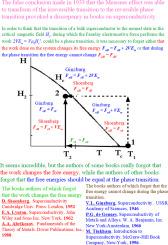在宏观量子现象中观察到的守恒定律问题是违反对应原理的结果
IF 4.6
2区 物理与天体物理
Q1 PHYSICS, MULTIDISCIPLINARY
引用次数: 0
摘要
豪尔赫-赫希(Jorge Hirsch)提请人们注意迈斯纳效应与法拉第定律和角动量守恒定律的矛盾。这篇文章提请人们注意这样一个事实:在微观和宏观量子现象中,角动量可以在没有任何力的情况下发生变化。但如果在前一种情况下,这种变化不能超过普朗克常数,那么在后一种情况下,由于违反了对应原理,这种变化就是宏观的。为了解释违反对应原理的现象,列夫-朗道在 1941 年假设超流体氦和超导体中的微观粒子不能单独运动。量子化不仅可以改变角动量,还可以在宏观上改变超导凝聚态的动能。因此,迈斯纳效应和其他宏观量子现象与热力学第二定律相矛盾。由于物理学家不愿承认违反热力学第二定律,导致人们对超导现象产生错误的理解,有关超导的书籍也存在明显的矛盾。本文章由计算机程序翻译,如有差异,请以英文原文为准。

A problem with the conservation law observed in macroscopic quantum phenomena is a consequence of violation of the correspondence principle
Jorge Hirsch drew attention to the contradiction of the Meissner effect with Faraday’s law and the law of angular momentum conservation. This article draws attention to the fact that the angular momentum can change without any force only due to quantization in both microscopic and macroscopic quantum phenomena. But if in the first case this change cannot exceed the Planck constant, then in the second case this change is macroscopic due to a violation of the correspondence principle. To explain the violation of the correspondence principle, Lev Landau postulated in 1941 that microscopic particles in superfluid helium and superconductor cannot move separately. Quantization can change not only the angular momentum, but also the kinetic energy of a superconducting condensate on a macroscopic amount. For this reason, the Meissner effect and other macroscopic quantum phenomena contradict the second law of thermodynamics. The reluctance of physicists to admit the violation of the second law of thermodynamics provoked a false understanding of the phenomenon of superconductivity and obvious contradictions in books on superconductivity.
求助全文
通过发布文献求助,成功后即可免费获取论文全文。
去求助
来源期刊

Chinese Journal of Physics
物理-物理:综合
CiteScore
8.50
自引率
10.00%
发文量
361
审稿时长
44 days
期刊介绍:
The Chinese Journal of Physics publishes important advances in various branches in physics, including statistical and biophysical physics, condensed matter physics, atomic/molecular physics, optics, particle physics and nuclear physics.
The editors welcome manuscripts on:
-General Physics: Statistical and Quantum Mechanics, etc.-
Gravitation and Astrophysics-
Elementary Particles and Fields-
Nuclear Physics-
Atomic, Molecular, and Optical Physics-
Quantum Information and Quantum Computation-
Fluid Dynamics, Nonlinear Dynamics, Chaos, and Complex Networks-
Plasma and Beam Physics-
Condensed Matter: Structure, etc.-
Condensed Matter: Electronic Properties, etc.-
Polymer, Soft Matter, Biological, and Interdisciplinary Physics.
CJP publishes regular research papers, feature articles and review papers.
 求助内容:
求助内容: 应助结果提醒方式:
应助结果提醒方式:


